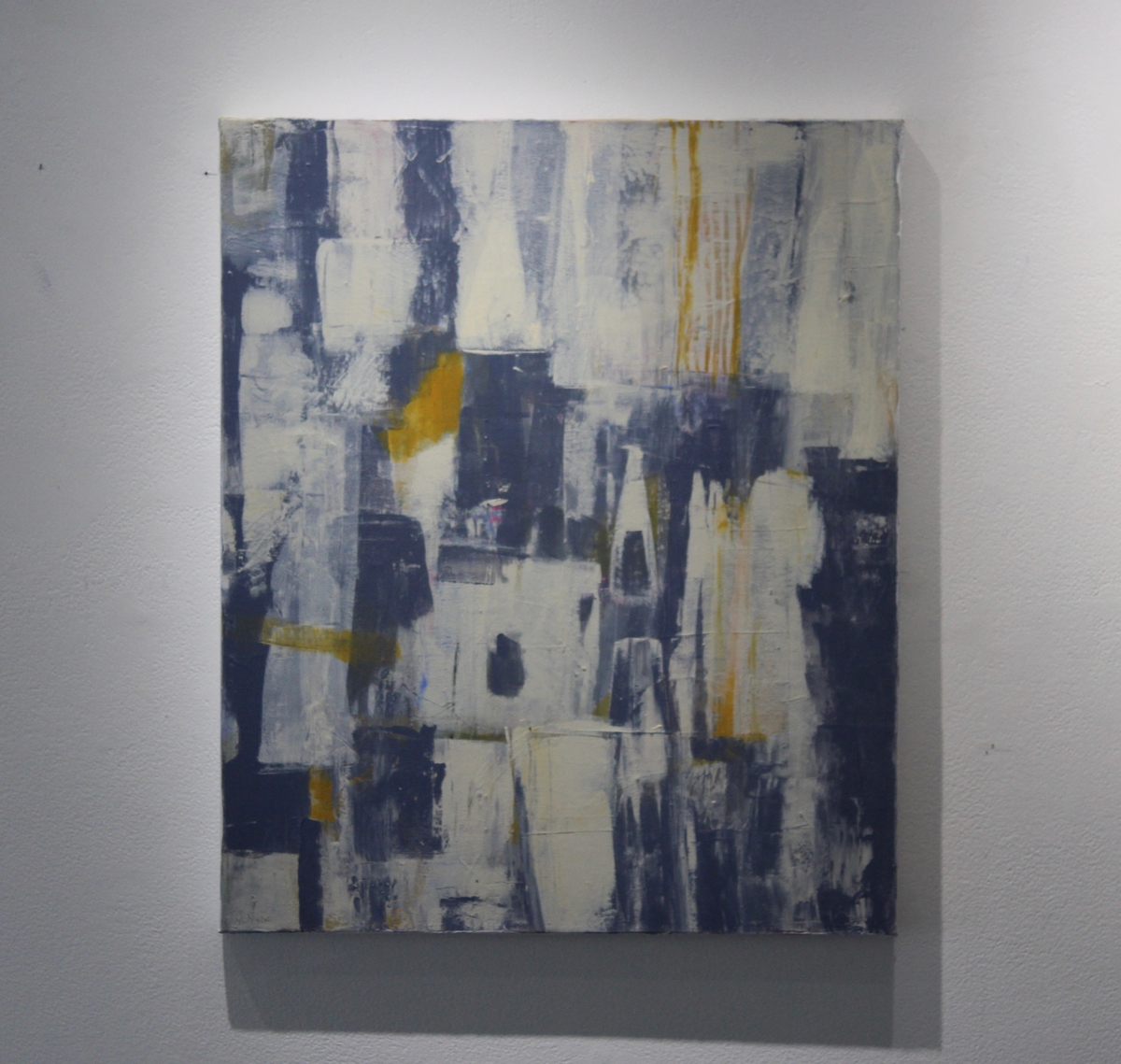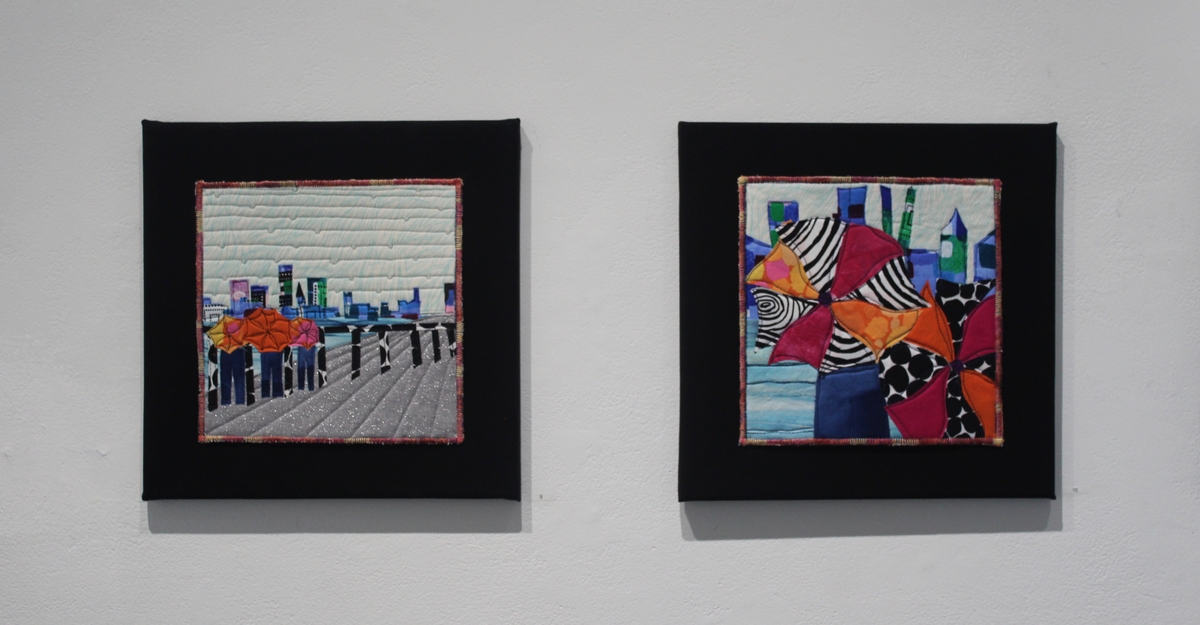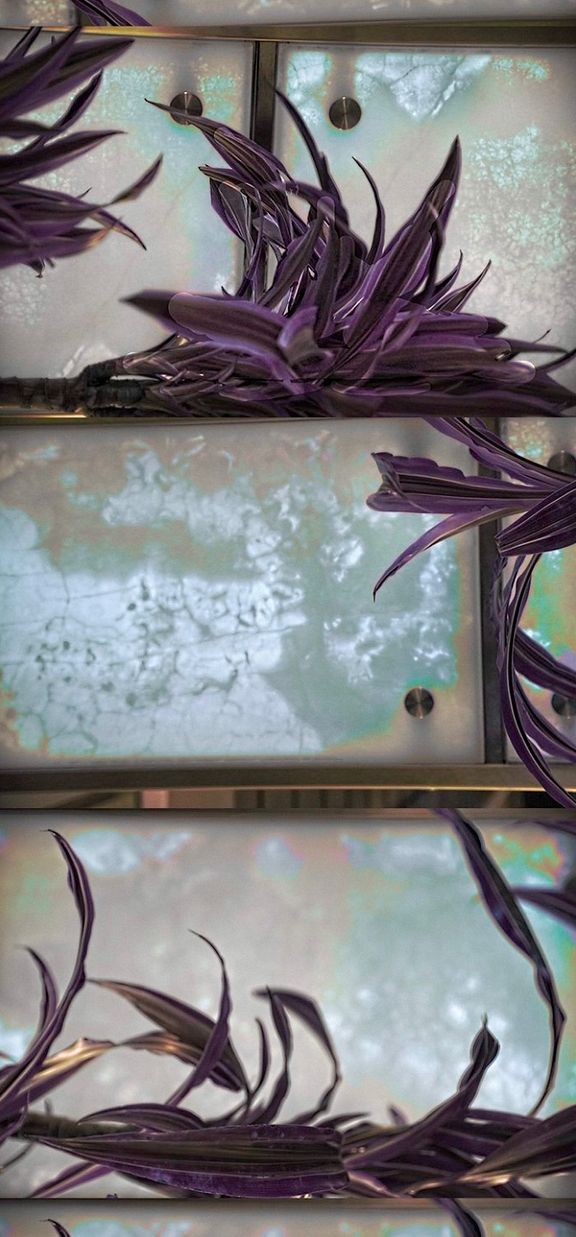
Judy Atlas
Blue Flux.
Judy Atlas’s Blue Flux can evoke dozens of things if you let it: a cityscape in the rain, a snow field, the inside of an ice crystal, with just a little sun streaming through. But that’s not the game the painting asks you to play. It can also just be taken on its own terms, as color and texture, a composition that is satisfying because its elements are well balanced, without having to mean anything in particular. Or maybe put another way, it can evoke a few meanings at once, without ever needing to land on a single one; it’s the impression it leaves on the viewer that matters.
Atlas, an accompanying note states, “expresses her exploration of the patterns, shapes, lines and movements found in nature and everyday life. Her paintings in this exhibit return to her ‘flux’ series, communicating the sense or state of always flowing, yet never ending.”
Atlas’s abstractions fit snugly into the unifying theme of “Blue Does Not Mean Sky,” the group show at City Gallery running now through Jan. 28. As the show’s notes state, “French painter Henri Matisse once explained, ‘when I apply green, that does not mean grass, when I apply blue, that does not mean sky.’ Abstract art does not attempt to be literal in that way; it uses other means to express the feelings and visions of the artists, guiding the viewers to new perspectives.” The four artists in the show — Atlas, Meg Bloom, Rita Hannafin, and Phyllis Crowley — each explore this idea on their own terms, drawing from the world around them and refracting it, transforming it, to find new ways of seeing.

Meg Bloom
Coming and Going and Everything in Between.
Bloom, an accompanying note states, “finds beauty in the imperfect and impermanent. Through her sculptures and mixed media works, her art marks moments of transience as she responds to the world around her. Her art almost always references nature and reflects the increased urgency she feels to respond to the chaos and destructiveness in the environment, whether natural or man-made.” In Coming and Going, that urgency is on full display, and as the title implies, the energy in it is moving in more than one direction. The forces that destroy can also be used to create. In each catastrophe, there’s a chance for transformation.

Rita Hannafin
Sketch #1 and Sketch #2.
Artist Rita Hannfin captures a similar energy in fabric. “Rooted in a traditional quilt-making background,” an accompanying note states, she “explores abstraction to express a new perspective of personal images that inspire her. Her series in this group show begins with an orderly vista and morphs into a chaotic construct. The underlying emotion is the energy of New York City which serves to unify the work.” As Hannafin’s work is hung in the gallery, it’s possible to see that morphing from panel to panel. Shapes that are readable as buildings curl into shades of color. The umbrella held by a row of people on a dock twist into whorls of light. There’s an argument made from panel to panel: the more figurative work might better capture what you might have seen if you were there with the artist, but the abstraction captures what you might have felt.

Phyllis Crowley
Stifled.
Finally, artist “Phyllis Crowley combines photographs to make new relationships that bring her closer to the original emotional experience. The images speak to each other, create different ideas and associations, often emphasizing elements that are subdued in each original. The process is similar to building a story sentence by sentence; or even more, in writing a poem with the words carefully chosen, and the placement critical.”
Crowley’s explanation of the way she creates her images also points out a key difference between working with images and working with words: the images themselves don’t carry inherent meaning. As much as poems open themselves to interpretation, images do it even more. In Crowley’s hands, they don’t offer a clear direction. Is the title of the piece serious or ironic? Are the plants in the image trapped in their chambers or taking them over? Or something else entirely? The story we find in is one we make, but it’s also a conversation, with the image and the artist behind it.